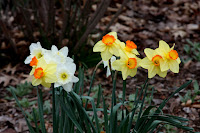Choosing Colors for Your Garden
The Flower, Garden & Nature Society of Northwest Arkansas will meet Saturday, October 15 , to hear "Pink Hates Chartreuse: Thoughts on Color in the Garden". Speaker will be Tom Dillard, an avid gardener, retired head of Special Collections at the University of Arkansas Libraries in Fayetteville, and a historian and specialist on Arkansas history, about which he writes a weekly column for Arkansas Democrat-Gazette. The meeting will be held in the Student Center of Northwest Technical Institute at 709 S. Old Missouri Road in Springdale, AR. It is free and open to the public. The meeting will begin at 10:00 a.m. Info: 479-361-2198 and on facebook.com/fgnsofnwa . An article ( link ) about Dillard when he retired says that " Dillard is best known as a creator of the Encyclopedia of Arkansas History & Culture, which he still serves as founding editor-in-chief, and as creator of the Richard C. Butler Center for Arkans...




